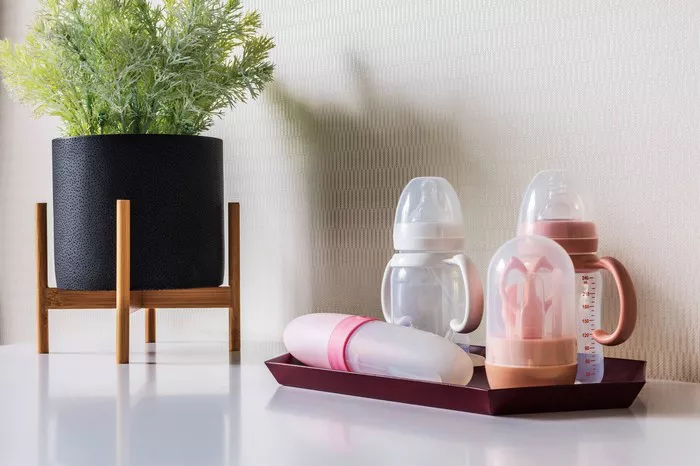As parents, we are constantly bombarded with information on what is best for our little ones. Among the myriad of advice, one recurring topic is the sterilisation of baby bottles and feeding equipment. For many, the question arises: Can I stop sterilising bottles at 4 months? This article aims to provide a comprehensive exploration of this query, covering the importance of sterilisation, guidelines from health authorities, risks of stopping early, sterilisation methods, transitioning to alternatives, cleaning non-sterilised items, determining when to stop sterilising, and addressing frequently asked questions.
Explanation of Sterilisation
Sterilisation of baby bottles and feeding equipment is a crucial practice during infancy due to the vulnerability of a baby’s developing immune system to germs and bacteria. Babies are particularly susceptible to infections in their early months, as their immune systems are still maturing. Proper sterilisation helps minimize the risk of exposing infants to harmful pathogens present in milk residue or surrounding environments.
Guidelines from Health Authorities
Reputable health authorities such as the National Health Service (NHS) typically recommend sterilising bottles for at least the first year of a baby’s life. This recommendation aligns with the understanding that infants’ immune systems are not fully developed until around the age of one, making them more susceptible to infections. However, opinions vary among experts regarding the duration of sterilisation, with some suggesting that it may not be necessary after the baby begins exploring objects by mouth, typically around four months of age.
Risks of Stopping Early
While the idea of ceasing sterilisation early may seem appealing, it’s essential to consider the potential risks involved. Stopping sterilisation prematurely can expose infants to harmful bacteria present in milk residue, leading to gastrointestinal infections and other illnesses. Even though babies may start exploring objects orally around four months, their immune systems are still developing, and they remain vulnerable to infections.
How to Sterilise
Proper sterilisation of baby bottles and feeding equipment is paramount to ensure the safety and health of infants. There are several methods available for sterilising, including boiling, chemical sterilisers, and steam sterilisers. Regardless of the chosen method, it’s essential to follow the manufacturer’s instructions carefully to achieve effective sterilisation. Here’s a brief overview of each method:
1. Boiling: Submerge bottles and feeding equipment in boiling water for at least five minutes, ensuring they are fully submerged and not touching the sides of the pot.
2. Chemical Sterilisers: These typically involve using sterilising tablets or solutions mixed with water to soak bottles and equipment for a specified time before rinsing thoroughly.
3. Steam Sterilisers: These electric devices use steam to sterilise bottles and equipment quickly and efficiently, following the manufacturer’s instructions for proper usage.
Alternatives to Bottles
As infants transition to solid foods around six months of age, parents may consider introducing sippy cups as alternatives to bottles. Sippy cups are easier to clean and better for the baby’s dental health, as they reduce the risk of prolonged exposure to sugary liquids. Transitioning to sippy cups also encourages independent drinking skills and prepares babies for eventually drinking from regular cups.
Cleaning Non-Sterilised Items
While bottles and feeding equipment require sterilisation, other items such as cups and beakers may not necessarily need sterilising. Instead, these items can be thoroughly cleaned using warm soapy water or a dishwasher to remove any milk or food residue. It’s essential to pay close attention to crevices and hard-to-reach areas to ensure thorough cleaning.
When to Stop Sterilising
While some sources suggest phasing out sterilisation after 12 months, it’s essential to consider individual circumstances and continue the practice until the baby stops using bottles and dummies altogether. Babies may continue to use bottles for comfort or as part of their bedtime routine beyond the age of one, so it’s advisable to maintain sterilisation until they transition fully to other drinking vessels.
FAQs
Should I Sterilise Other Baby Items Like Dummies and Teething Toys?
It’s advisable to sterilise items that come into contact with a baby’s mouth, such as dummies and teething toys, especially during the first year of life. After that, regular cleaning with warm soapy water or a dishwasher should suffice. Be sure to check manufacturer guidelines for specific cleaning instructions.
Is Boiling Sufficient for Sterilising Bottles?
While boiling is an effective method for sterilising bottles and feeding equipment, it’s essential to ensure they are fully submerged and not touching the sides of the pot. Additionally, follow the recommended boiling time of at least five minutes to achieve proper sterilisation.
Can I Sterilise Bottles in the Microwave?
Some bottles are microwave-safe and come with specific sterilisation instructions. However, microwaving may not provide consistent sterilisation across all parts of the bottle, so it’s crucial to follow the manufacturer’s guidelines carefully. Alternatively, consider using steam sterilisers for more reliable results.
In conclusion, the decision to stop sterilising bottles at four months requires careful consideration of the baby’s developmental stage, individual circumstances, and expert recommendations. While some may opt to phase out sterilisation earlier, it’s essential to prioritize the safety and health of infants by following proper sterilisation practices until they transition to alternative drinking vessels. By staying informed and adhering to guidelines from reputable health authorities, parents can make informed decisions that promote the well-being of their little ones.


